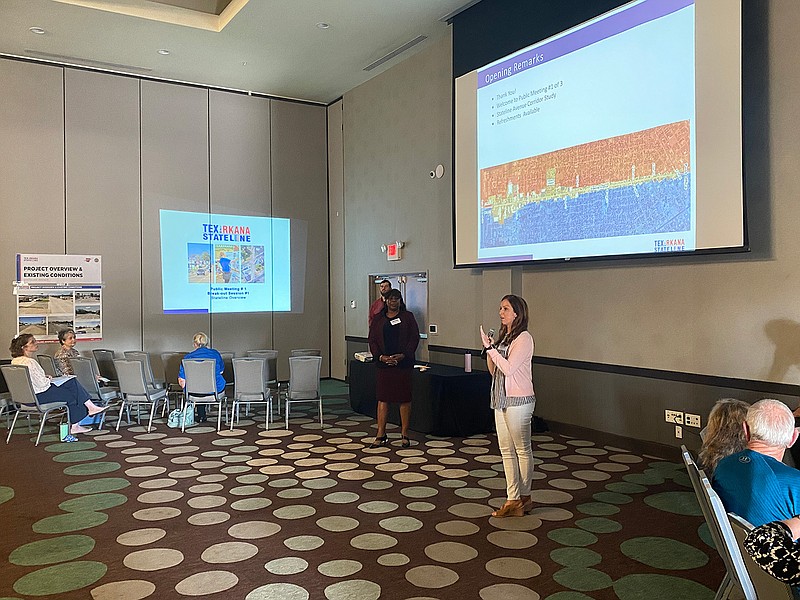TEXARKANA, Ark. - A public meeting was held Tuesday evening at the Texarkana Arkansas Convention Center to outline potential improvements to the State Line Avenue corridor.
Members of MTG Engineers and Surveyors and Norris Design gave presentations at five different stations where community members rotated to learn about areas of State Line that can be better.
Each station had a different presenter with various talking points about what can be done. Questionnaires were handed out at the end of each session where participants could highlight their biggest concerns and make comments.
The first station was manned by MTG Project Manager Vance Liles, who over-viewed State Line Avenue's attributes and deficiencies.
Liles noted the significance and uniqueness of the bi-state road and said that in order to maximize its potential, the safety, accessibility and aesthetic needs to be improved upon. He said the Departments of Transportation for Texas and Arkansas have slated funding for the reconstruction of State Line Avenue with a project planned for 2023, and the input people give at this meeting could impact what is reconstructed.
"If we're going to give our input, now is the opportunity," Liles said.
At the second station, David Williams with MTG talked about traffic patterns on State Line.
He showed a heat map of the crash rate in Texarkana with a high rate displayed in State Line Avenue, citing more than 300 accidents that have occurred during the past five years in that area.
Some of the potential improvements shown to help lower these numbers included raised medians and right-in-right-out roadways.
The last three stations were from Norris Design project managers and principals.
At the third station, Yingyi Zhong raised concerns about pedestrian and bike mobility.
Some of the potential changes that could be made included better pedestrian lighting, new landscaping, crosswalks with signals and signage and push-button signals. The bike mobility was also mentioned as a deficiency on State Line, as there are no bike paths.
Emily Larkin suggested measures to improve the beautification of State Line Avenue at the fourth station, through improved landscaping and painting. Larkin said more trees could help provide improved shade, and refuge areas in the middle of crosswalks could improve safety and convenience.
Rick Leisner spoke about corridor districts and sidewalk improvements at the fifth and final station.
Leisner said State Line could be separated into three districts:
The urban district - the portion of State Line by the courthouse downtown
The commercial district - the portion by Interstate-30
The residential district - the portion in between the urban and commercial districts
He said each district has its own characteristics with different improvements to be made, according to the level of traffic and pedestrians in each area.
One issue that applies to all three districts is the sidewalk-to-road width. Leisner said the driving lanes on State Line are entirely too wide, and there needs to be more walking room on the sidewalks created by expanding them into the road.
Vance Liles said he hopes MTG and Norris Design can use the information from this public meeting to devise a plan and propose a session as to what could fit or be developed along the corridor by 2023.
While the first meeting is viewed as a planning session, MTG and the Metropolitan Planning Organization will look to further devise a more specific plan in following meetings in July and August.

